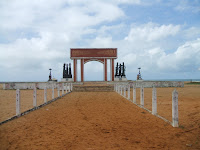Imagine souring high in a helicopter over snow covered glaciers as far as the eye can see; gradually civilization blurs in the wake of the helicopter. Through your headphones the mechanical voice of your pilot transports you to another place as old as the dinosaurs. Your senses incite with the possibilities and the thrill of the unknown. On the edge of your seat you and your fellow explores are bedazzled as the pilot lands on a section of glacier with flawless precision.
Now the real adventure begins a guided tour of one of the remaining endangered glaciers in the world learning about the complexity of ice and experiencing the tranquility and beauty of natures secret.
But before you can get into the helicopter there are 10 things to know and do.
1. Most people don’t think about footwear when they prepare for a glacier walking tour but it’s really important, probably the most important thing. Walking on a glacier requires a special type of shoe that the company will provide, but what you need to know is that these shoes fit best for comfort with a primary shoe, preferably full coverage, no heel.
2. Bring sunglasses. Ultraviolet Keratitis, aka sun blindness, is a serious eye health problem. It occurs when unprotected eyes are exposed to UV radiation reflected from surfaces such as snow that reflects 85% of UV radiation or water that reflects a 100% of UV radiation.
3. Wear long sleeves and pants. Being on a glacier, especially if there is wind, is like standing in-front of the open door of a freezer for an hour. Bring light layers that can be put on top of your summer clothes. Later, they can easily be rolled up and put away.
 4. Bring your camera or video camera, while cell phone cameras are getting better every year the complexity of a crevasse can best be captured with a real camera. Reasonably sized camera bags are expectable, but still check with the crew when you arrive at the departure location.
4. Bring your camera or video camera, while cell phone cameras are getting better every year the complexity of a crevasse can best be captured with a real camera. Reasonably sized camera bags are expectable, but still check with the crew when you arrive at the departure location. 5. There are no bathrooms on glaciers. Glaciers do not have facilities like state or national parks. So go before you get on the helicopter! Otherwise make yourself comfortable with a hole and a few leafs.
6. Large book bags and purses aren’t generally allowed on the helicopter because the weight of each item counts. Most facilities will have a location where you can store your belongings for the duration of the excursion. My personal rule: what fits in the pockets, gets to go.
7. Bring a pocket size poncho. Glaciers don’t have shaded areas, so if there is unexpected rain a poncho will become your favorite accessory.
8. The stones, beware of physical weight limits for your particular helicopter company. No customer will be turned away for weight, but there are overweight fees. Each seat is given a specified weight maximum. For example if the per-person weight is 250 and you weigh 260 they might have you pay 50% of the original ticket on top. Check with the company that will be flying you, not the booking agency. Refunds are rarely if ever given.
9. Tip! The hospitality business is all about tips. And your Glacier guides are no different. Each summer they trek out into the middle of nowhere to share themselves and what they know about glaciers to help you make memories. Take care of your guides and pilots. About.com recommends tipping a good guide 10-20% of the total ticket price.
10. Have fun.






